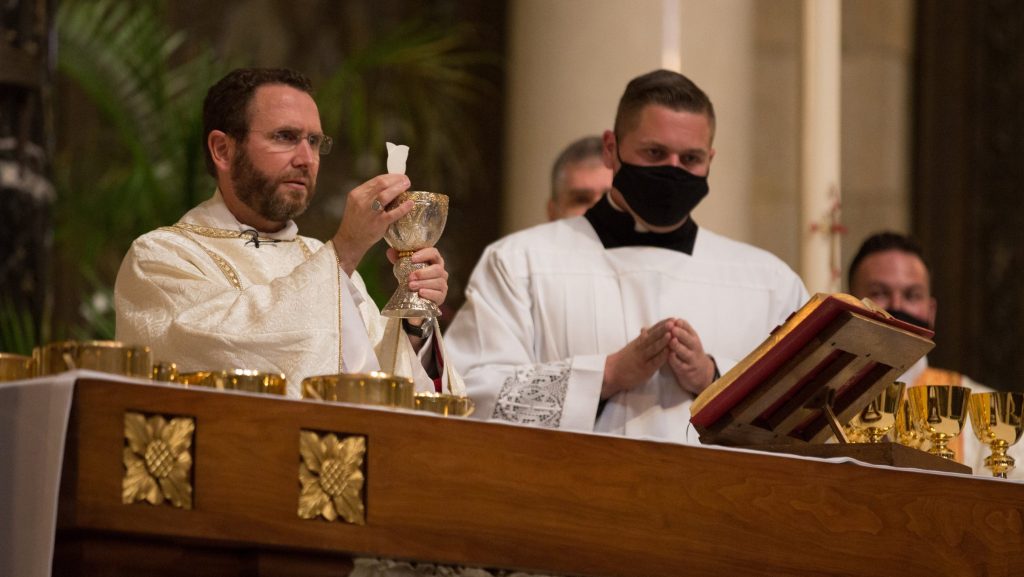Nearly buried last month in the hubbub surrounding the U.S. bishops’ debate over who is and who isn’t worthy to receive Communion was a colloquy between two bishops concerning something that may prove of far greater importance in the long run.
Auxiliary Bishop Andrew Cozzens of St. Paul-Minneapolis had reported on plans for a project called the National Eucharistic Revival and was fielding questions. Auxiliary Bishop Robert Barron of Los Angeles, a prominent media evangelist, urged that instead of starting next year, the project should begin sooner because of the urgent need for it. Bishop Cozzens replied that dioceses could start earlier if they wished, but the revival needed careful planning if its impact was to be “lasting and deep.”
Both bishops were right. The need really is urgent. And one can only hope this project has significant results.
Familiar numbers underline the need. Fifty years ago, nearly 60% of American Catholics attended Mass weekly, but by 2019, the last pre-pandemic year, the figure had dropped to little more than 21%. Not only that, recent survey results showed that two-thirds of all U.S. Catholics, and nearly a third of weekly Mass-attenders, do not believe that Christ is truly present in the Eucharist.
Reacting to these disturbing figures, the bishops last year voted overwhelmingly in support of the Eucharistic Revival in hopes of promoting faith and devotion to the Blessed Sacrament. Bishop Cozzens, chairman of the planning committee, presented a progress report at the spring assembly of the U.S. Conference of Catholic Bishops.
What is envisaged is at the very least ambitious. Extending over three or more years, the revival will get underway in dioceses in the summer of 2022 and continue at the diocesan level until the following summer. The emphasis at this stage will be on the formation of priests and parish, and young adult leaders, including training “lay eucharistic missionaries” who will carry the message into parishes. Among other events contemplated are diocesan “days of adoration” and diocesan eucharistic congresses.
Year two, from July 2023 to June 2024, will be devoted to carrying the revival into parishes. Small-group leaders will be trained to head discussions among various age groups. Other parish activities will include eucharistic adoration, sacramental confession, and Corpus Christi celebrations.
The high point of the third year will be a national eucharistic congress — the first of its kind in the United States since one in Philadelphia during the U.S. Bicentennial in 1976. The search for a suitable site — probably in the Midwest or South — is now underway, Bishop Cozzens said. Overall, the project hopes to train and commission 100,000 “missionaries” to evangelize on behalf of the revival.
A number of organizations and institutions have signed on as collaborators in the project, including the Knights of Columbus, the McGrath Institute for Church Life at Notre Dame University, the Franciscan University of Steubenville, Ohio, Our Sunday Visitor, Word on Fire, Hispanic and youth groups, and others.
Looking at all this, the first word that comes to mind is: big. It would be hard to recall any project undertaken by the American bishops in modern times comparable in scope.
But although bigness is no vice, neither is it in and of itself a virtue. And here is where Bishop Cozzens’ expressed hope for “lasting and deep” results is important. When the shouting is over, the success of the National Eucharistic Revival will be measured by how many American Catholics approach the Blessed Sacrament with stronger faith and deeper reverence. It deserves our prayers.

